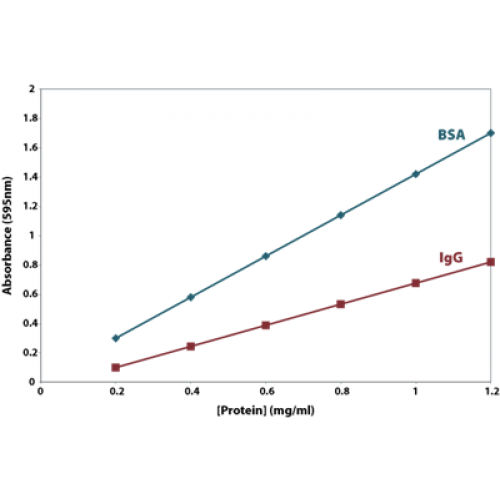Question:
Cytotoxicity Assays: How Are They Classified?
The Protein Man Says:
Subjecting cells to cytotoxic compounds may bring different results. Cells may stop growing and dividing actively, lose cell membrane integrity and suffer instantaneous death (necrosis) or initiate a series of events that will lead to programmed cell death (apoptosis). To better understand the effects of toxic compounds on living cells and to measure the level by which they begin to exhibit their harmful effects on biological systems, researchers and pharmaceutical laboratories use cytotoxicity assays to learn what they need to know.
 In general, there are three distinct types of cytotoxicity assays. There are assays that determine cell viability by:
In general, there are three distinct types of cytotoxicity assays. There are assays that determine cell viability by:
-
Exhibiting a change in the membrane permeability or metabolism (viability assays);
-
Measuring their absolute long term survival rate and their capacity to regenerate (long term survival assays);
-
Exhibiting survival in an altered or genetically mutated state (irritancy assays).
Viability Assays
Cytotoxicity assays belonging to this group include those that infer viability through the following methods:
-
Dye exclusion methods. To determine viability, the cell suspension is combined with a particular dye such as tryptan blue, naphthalene black and erythrosine, and examined using haemocytometer and an optical microscope. Since viable cells will be impermeable to these dyes, cell viability can then be expressed as the percentage of unstained cells as compared to the overall population.
-
Dye uptake methods. Living cells have the ability to bind with neutral red so you can have a fairly accurate quantitative estimation of the number of viable cells in a culture.
-
Fluorescent methods. Viable cells can hydrolyze Diacetyl fluorescein to fluorescein and give off a characteristic green fluorescence. Non-viable cells, on the other hand, will give off a red fluorescence by using ethidium or propidium bromide.
-
Dye release methods. Cytotoxity tests such as the neutral red release (NRR) assay are used to measure the immediate toxic effects of substances on the cell membrane.
Long Term Survival Assays
There are many cases where a significant delay occurs between the introduction of the toxic compound and the cells' response to the toxic insult. In such cases, metabolic assays and protein assays are ideally suited to do the job.
Irritancy Assays
By using a silicon microphysiometer, reduction in the extracellular acidification rate as a result of any changes in the intracellular metabolism can be detected.
Since each of these approaches has its own advantages and disadvantages, it is highly recommended that you use a variety of cytotoxicity assays to accurately determine cell viability.
Image By: M i x y






